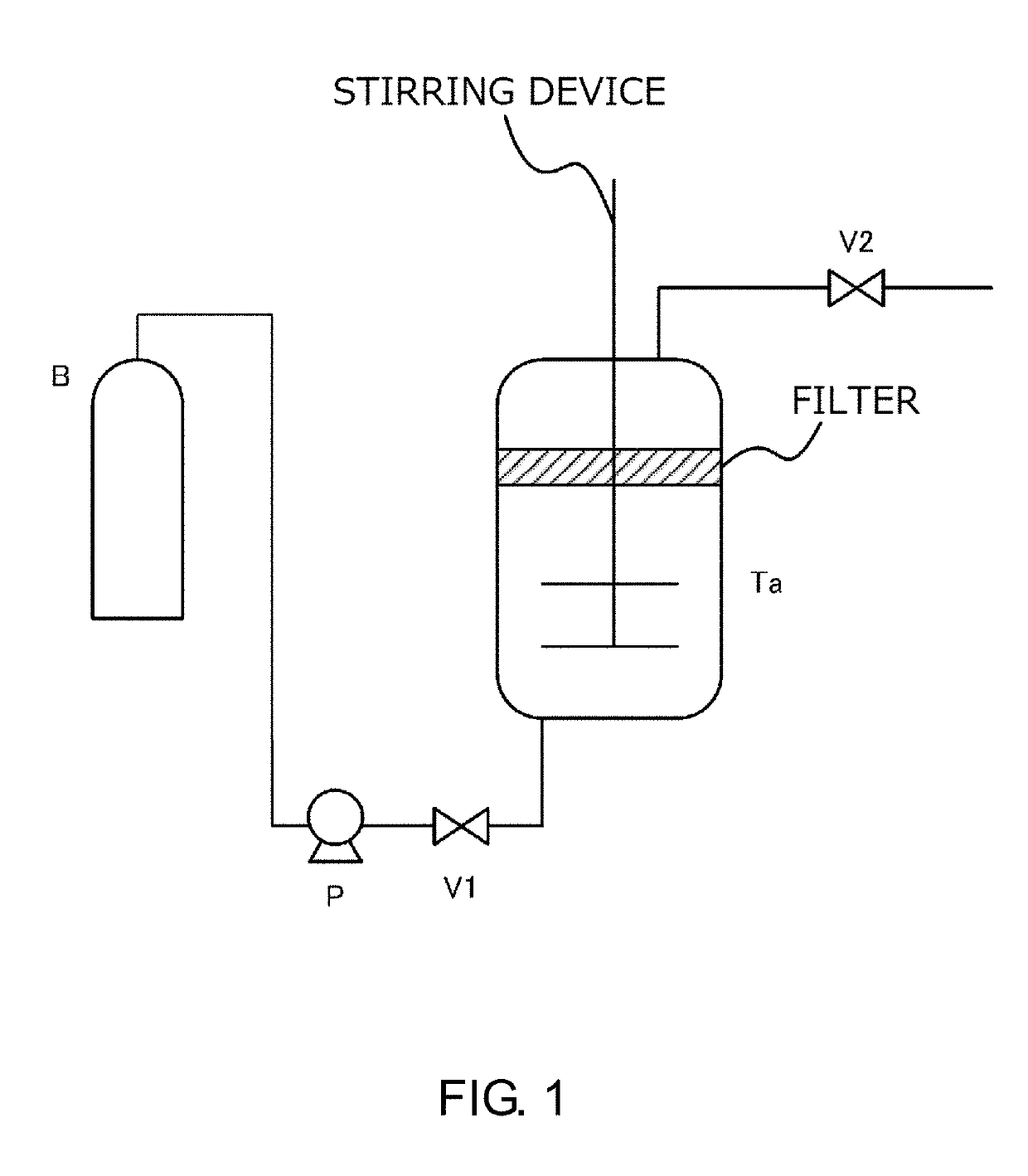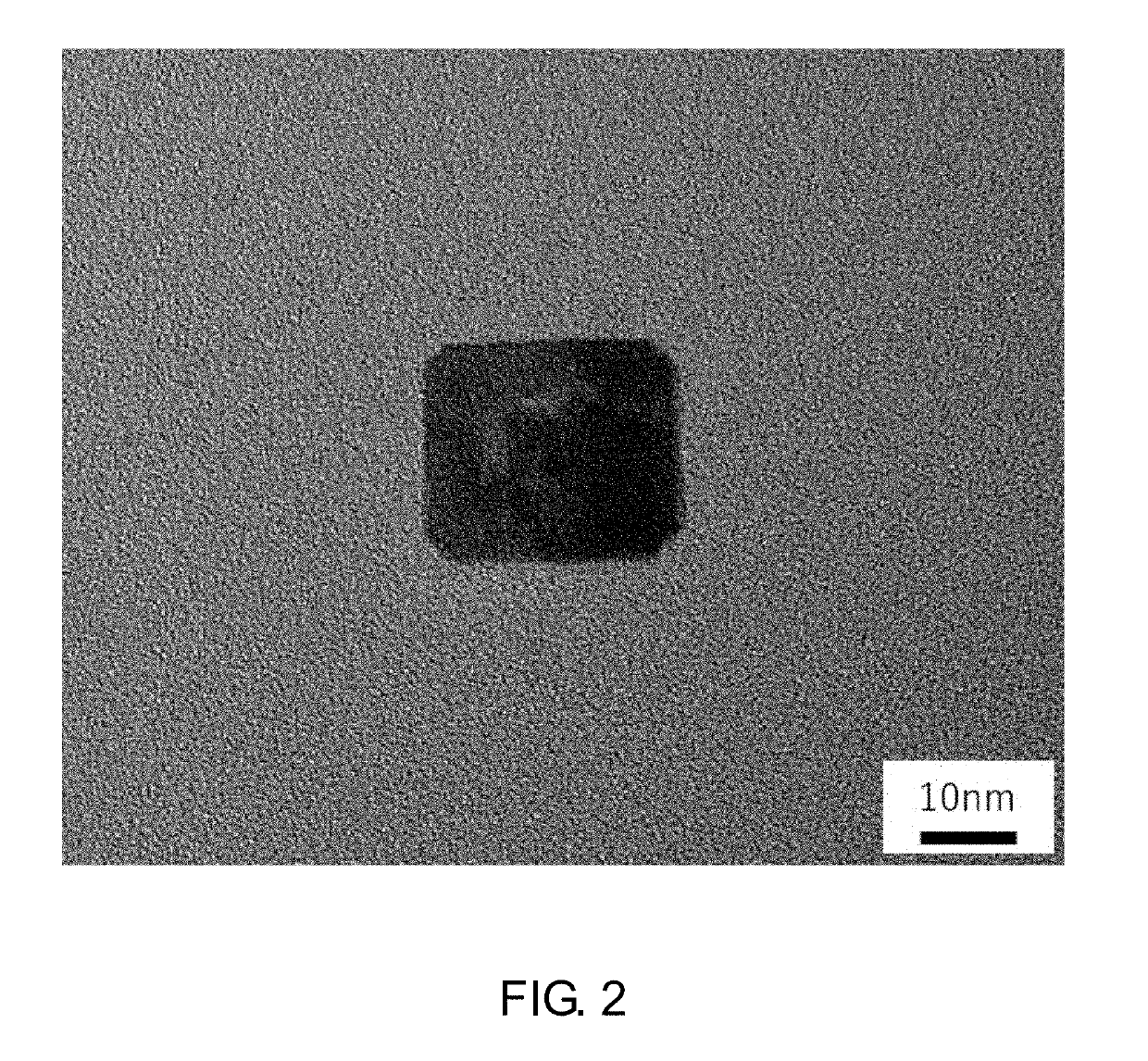Toner
a toner and molten toner technology, applied in the field of toner, can solve the problems of paper ejection, paper sheets sticking together, paper stained with toner, etc., and achieve the effects of suppressing paper ejection defects, improving low-temperature fixability and separability, and increasing the viscosity of molten toner
- Summary
- Abstract
- Description
- Claims
- Application Information
AI Technical Summary
Benefits of technology
Problems solved by technology
Method used
Image
Examples
production example 3
of Strontium Titanate Fine Particles
[0231]Metatitanic acid obtained by the sulfuric acid method was subjected to deironization bleaching treatment, then a sodium hydroxide aqueous solution was added to adjust the pH to 9.0, desulfurization treatment was carried out, and then neutralization to pH 5.8 was performed with hydrochloric acid, followed by filtration and washing. Water was added to the washed cake to make slurry with a concentration of 1.85 mol / L as TiO2, hydrochloric acid was thereafter added to obtain the pH of 1.0, and peptization treatment was carried out.
[0232]A total of 1.88 mol, as TiO2, of desulfurized and peptized metatitanic acid was collected and charged into a 3 L reaction vessel. A total of 2.16 mol of strontium chloride aqueous solution was added to the peptized metatitanic acid slurry so that the molar ratio of Sr / Ti became 1.15, and the TiO2 concentration was adjusted to 0.941 mol / L. Next, after warming to 90° C. under stirring and mixing, 440 mL of a 10N so...
production example 4
of Strontium Titanate Fine Particles
[0237]Metatitanic acid obtained by the sulfuric acid method was subjected to deironization bleaching treatment, then a sodium hydroxide aqueous solution was added to adjust the pH to 9.0, desulfurization treatment was carried out, and then neutralization to pH 5.8 was performed with hydrochloric acid, followed by filtration and washing. Water was added to the washed cake to make slurry with a concentration of 1.85 mol / L as TiO2, hydrochloric acid was thereafter added to obtain the pH of 1.0, and peptization treatment was carried out.
[0238]A total of 1.88 mol, as TiO2, of desulfurized and peptized metatitanic acid was collected and charged into a 3 L reaction vessel. A total of 2.16 mol of strontium chloride aqueous solution was added to the peptized metatitanic acid slurry so that the molar ratio of Sr / Ti became 1.15, and the TiO2 concentration was adjusted to 0.988 mol / L. Next, after warming to 90° C. under stirring and mixing, 440 mL of a 10N so...
production example 5
of Strontium Titanate Fine Particles
[0243]Metatitanic acid obtained by the sulfuric acid method was subjected to deironization bleaching treatment, then a sodium hydroxide aqueous solution was added to adjust the pH to 9.0, desulfurization treatment was carried out, and then neutralization to pH 5.8 was performed with hydrochloric acid, followed by filtration and washing. Water was added to the washed cake to make slurry with a concentration of 1.85 mol / L as TiO2, hydrochloric acid was thereafter added to obtain the pH of 1.0, and peptization treatment was carried out.
[0244]A total of 1.88 mol, as TiO2, of desulfurized and peptized metatitanic acid was collected and charged into a 3 L reaction vessel. A total of 2.16 mol of strontium chloride aqueous solution was added to the peptized metatitanic acid slurry so that the molar ratio of Sr / Ti became 1.15, and the TiO2 concentration was adjusted to 1.039 mol / L. Next, after warming to 90° C. under stirring and mixing, 440 mL of a 10N so...
PUM
| Property | Measurement | Unit |
|---|---|---|
| depth | aaaaa | aaaaa |
| number average particle diameter | aaaaa | aaaaa |
| weight average particle diameter | aaaaa | aaaaa |
Abstract
Description
Claims
Application Information
 Login to View More
Login to View More - R&D
- Intellectual Property
- Life Sciences
- Materials
- Tech Scout
- Unparalleled Data Quality
- Higher Quality Content
- 60% Fewer Hallucinations
Browse by: Latest US Patents, China's latest patents, Technical Efficacy Thesaurus, Application Domain, Technology Topic, Popular Technical Reports.
© 2025 PatSnap. All rights reserved.Legal|Privacy policy|Modern Slavery Act Transparency Statement|Sitemap|About US| Contact US: help@patsnap.com



